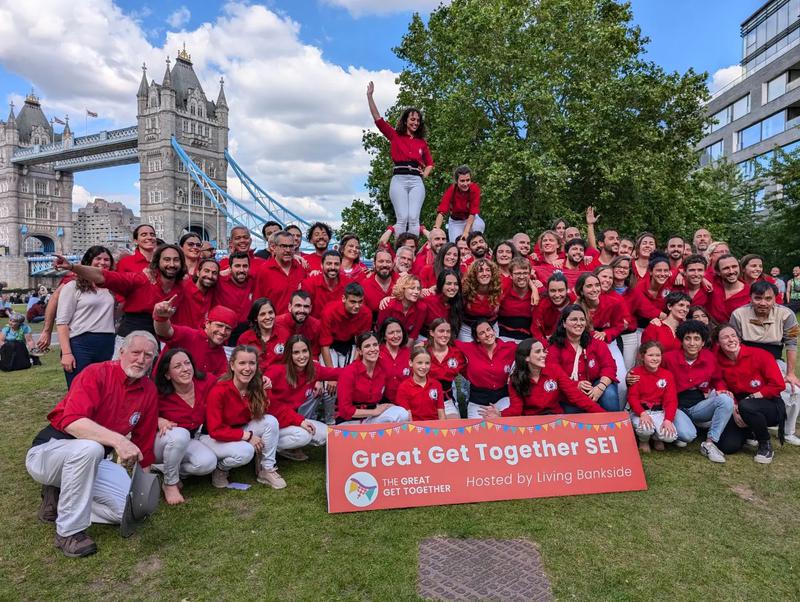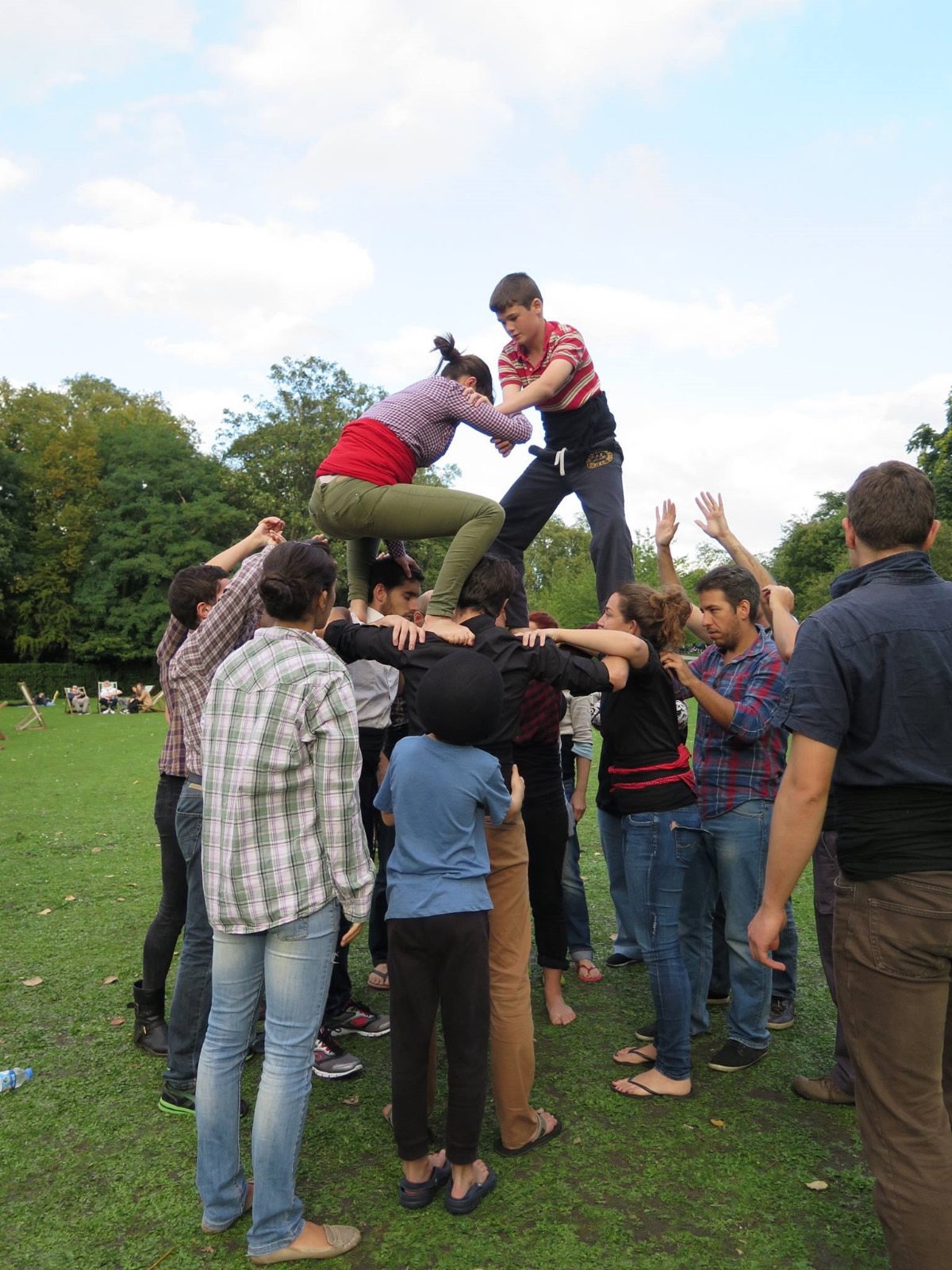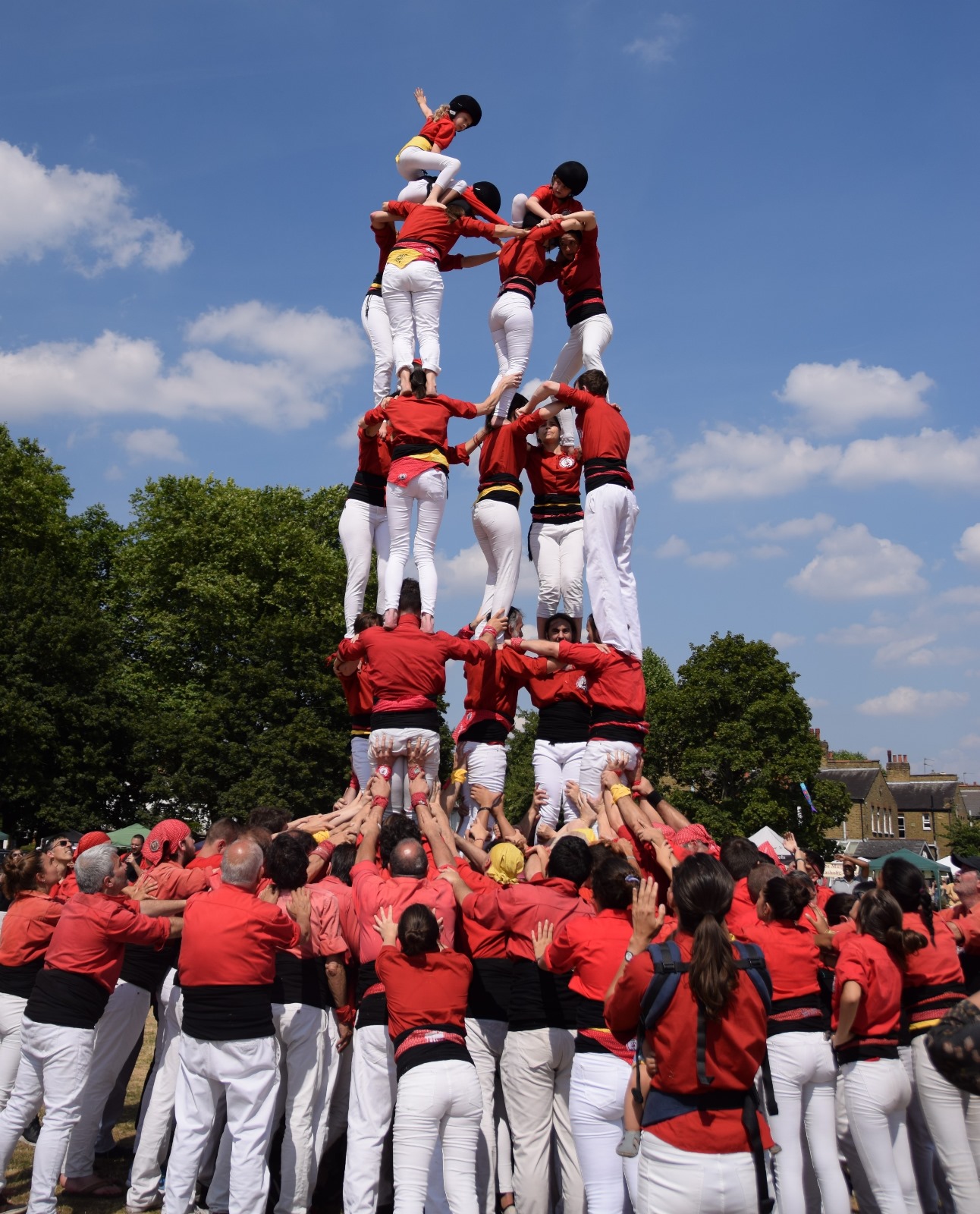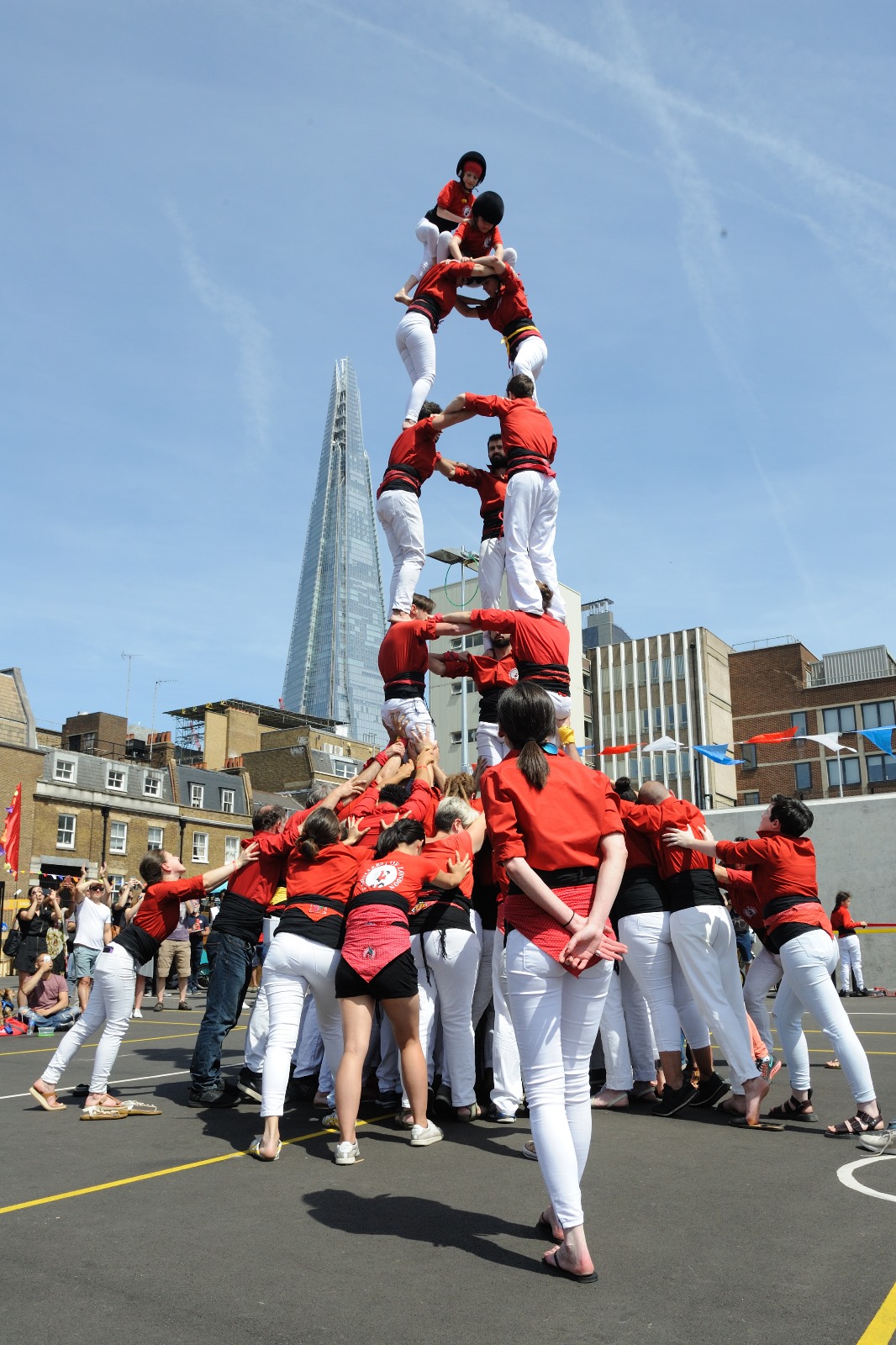Castellers of London: Uniting cultures abroad through human towers
International groups of castellers are growing, connecting people from all over the world to this fascinating Catalan tradition

Last Saturday, passersby on the banks of the Thames in London turned their attention away from the river and the iconic Tower Bridge to witness a unique scene.
A group of 80 people, dressed in red shirts, white pants and black sashes (faixes), were building tall human towers, an unusual sight outside Catalonia.
It was the Sant Joan performance of the Castellers of London, one of the 17 international colles, or groups of human towers. Have a listen to this Filling the Sink podcast to know more:
Castellers of London were founded in 2015, and in their nearly 10-year existence, they have faced several hardships along the way.
Stephen 'Cuss' Anderson, the president of the colla and one of its founders, explains that his passion for castells began during a trip to Valls, one of the main cities in the castellers world.
"Locals invited us to a castells training. I went along not having a clue what they were talking about. It was crazy, and I still think it is crazy, but wonderful too," he explains.
Cuss started traveling a few times a year to Valls and got involved in one of the local colles. A few years later, he decided, along with a few other people, to found their own colla in London.
They started practicing in Regent's Park and were a small group. They needed a space and more people, especially children, who are crucial for the high positions in the castell. But most importantly, they needed someone with experience in castells.
"After a while, some families came along, which was one of the key things. But more importantly, we had someone in our group who was captain of the 'tronc' [the intermediate part of the 'castell'] in Castellers de Sant Cugat. It was then when I realized we could have a serious think about it," he says.

From then, the colla started growing steadily. Currently, they have around 70 members, half of them Catalans, others from various Spanish regions, and several from around the world, including Malaysia, South Africa, and Portugal, among many other countries.
"One of the things I really like about it is that if you do castells, you're a casteller, and nobody calls you the French casteller or the German casteller. You're not subdivided again," he explains.
The colla not only unites cultures and brings together people from around the world but also serves as a place for Catalans to connect with their homeland.
"Catalans come along to connect with their culture and to be able to use Catalan with other people. They rarely have experience in castells," Cuss explains.

However, the Covid-19 pandemic had a significant impact on the colla, causing them to lose several members who left the country and never returned. Among those lost were some of their most experienced castellers, which affected the quality of their castells.
"Prior to lockdown, we were doing 5of6. The only one we didn't manage to get was the 2of6. Now it is building back up, and our goal for the next two years is to get the sixes on a regular basis," he explains.
In fact, the demonstration at Tower Bridge was very special, as the colla brought back the 4of6 for the first time since the pandemic, a sign that they are in good shape and ready to reach new heights.

Castellers of London perform at The Great Get Together in 2017 (Castellers of London)